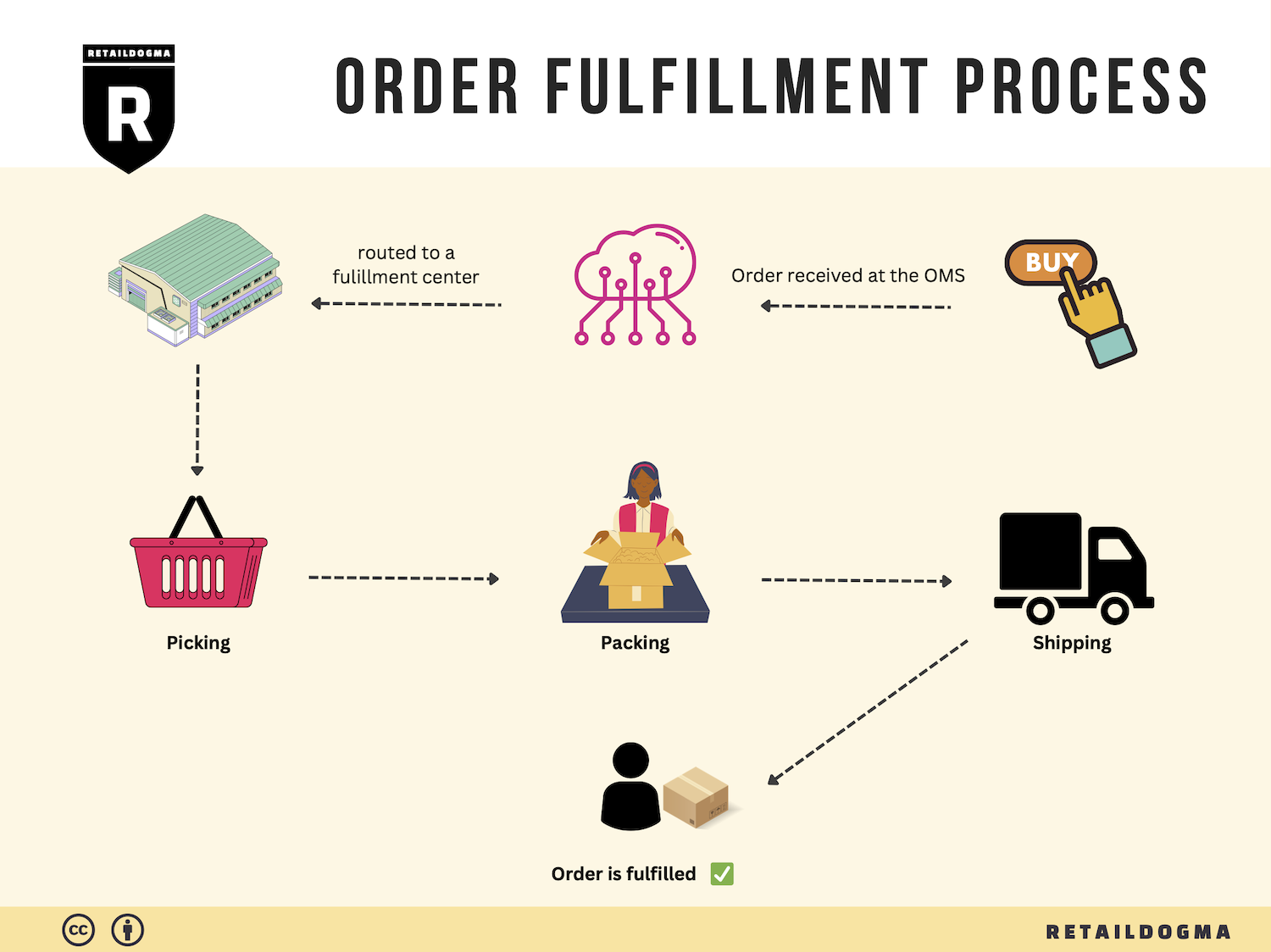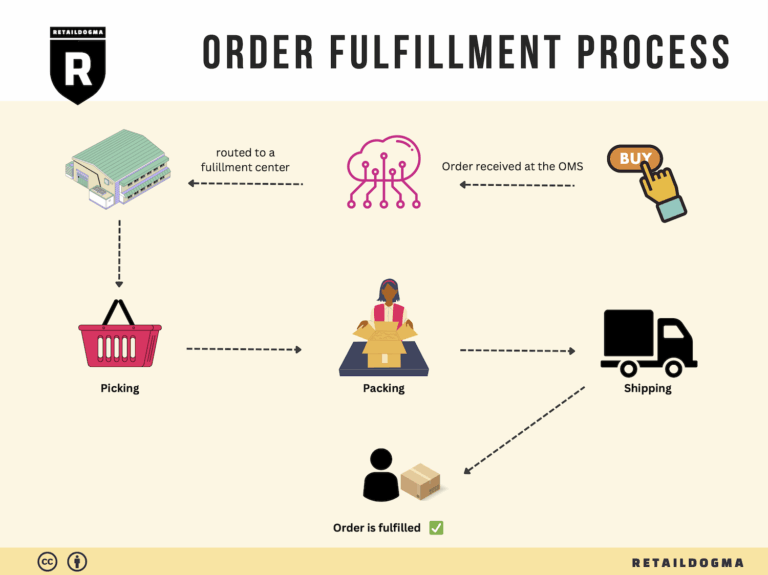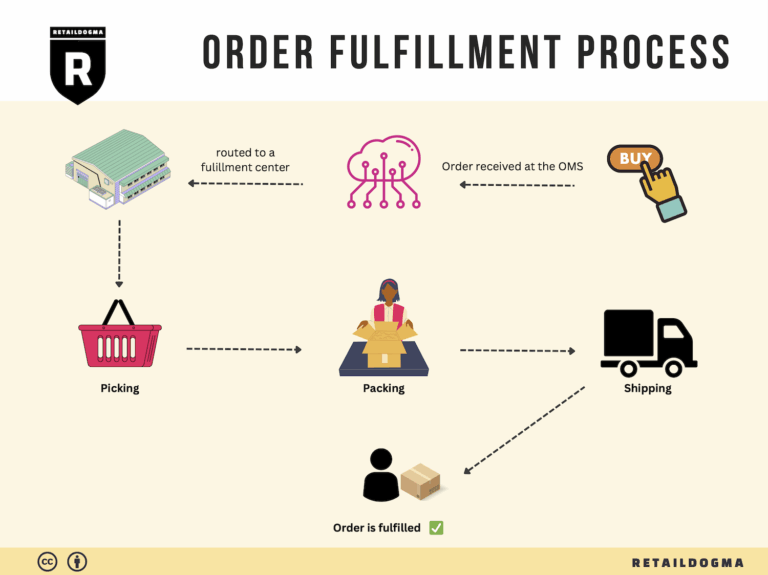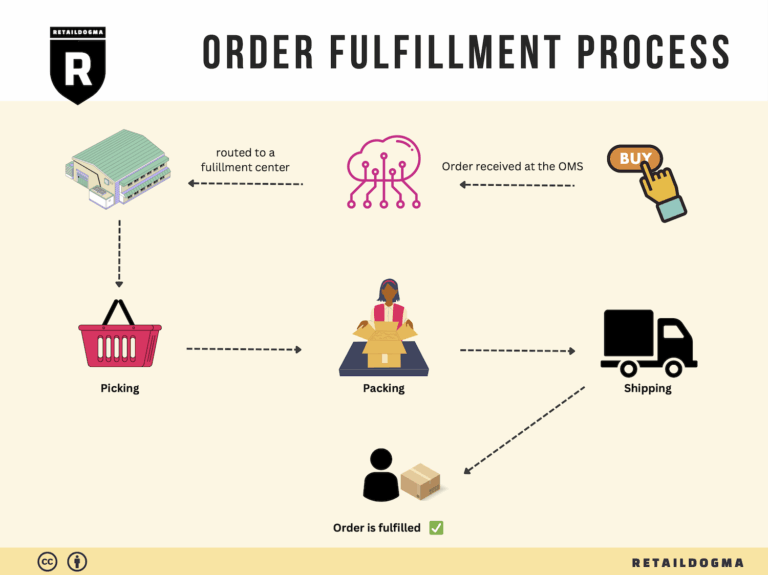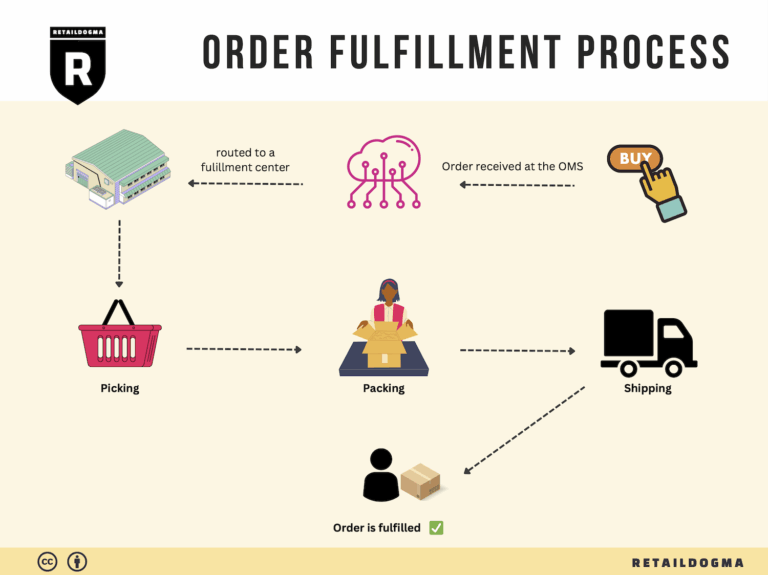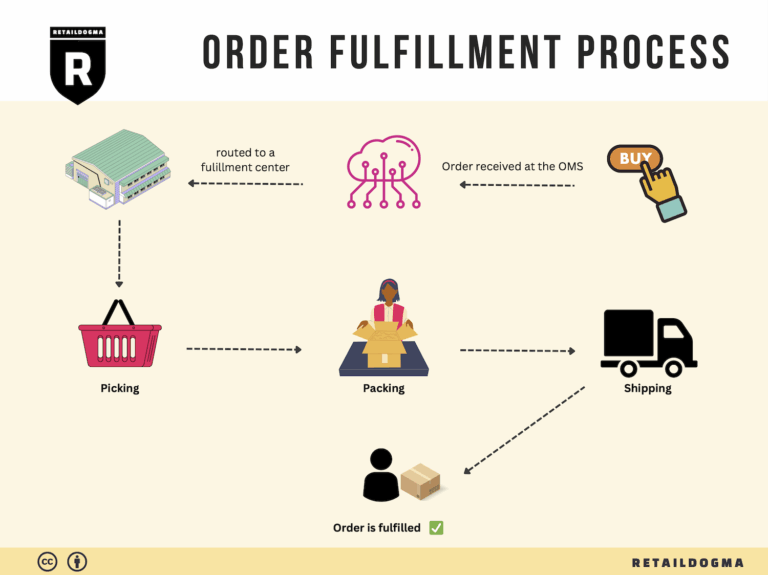What Is A Fulfillment Center? A Complete Guide (2025)
What is E-commerce Fulfillment? An Introduction for Growing Businesses
Understanding E-commerce Fulfillment
As a growing e-commerce business owner, you might find yourself drowning in the complexities of packing and shipping orders. The excitement of scaling your sales can quickly turn into stress as you juggle inventory management, shipping logistics, and customer expectations. This is where e-commerce fulfillment comes into play. Simply put, fulfillment is the process of getting a product into the hands of a customer—covering everything from receiving inventory and storing it to packing orders and shipping them out.
In this guide, we will explore various aspects of e-commerce fulfillment to help you navigate this crucial part of your operations effectively. We will discuss different fulfillment models, such as Third-Party Logistics (3PL) and Fulfillment by Amazon (FBA), and how they can align with your business needs. Each model has its unique advantages and can significantly impact your operational efficiency, customer satisfaction, and ultimately, your bottom line.
We will also delve into core fulfillment services, including inventory management, order processing, and shipping solutions. Understanding these services will enable you to assess what your business requires and how you can streamline your operations to meet customer demands swiftly and accurately.
Choosing the right fulfillment partner is critical as you scale your business. We will provide insights on what to look for in a fulfillment partner, including their technology capabilities, shipping options, and customer service. A strong partnership can alleviate the burden of logistics, allowing you to focus on product development and marketing.
Finally, we will discuss pricing strategies associated with different fulfillment models. Cost is always a factor, and understanding the pricing structure can help you make informed decisions that align with your growth goals.
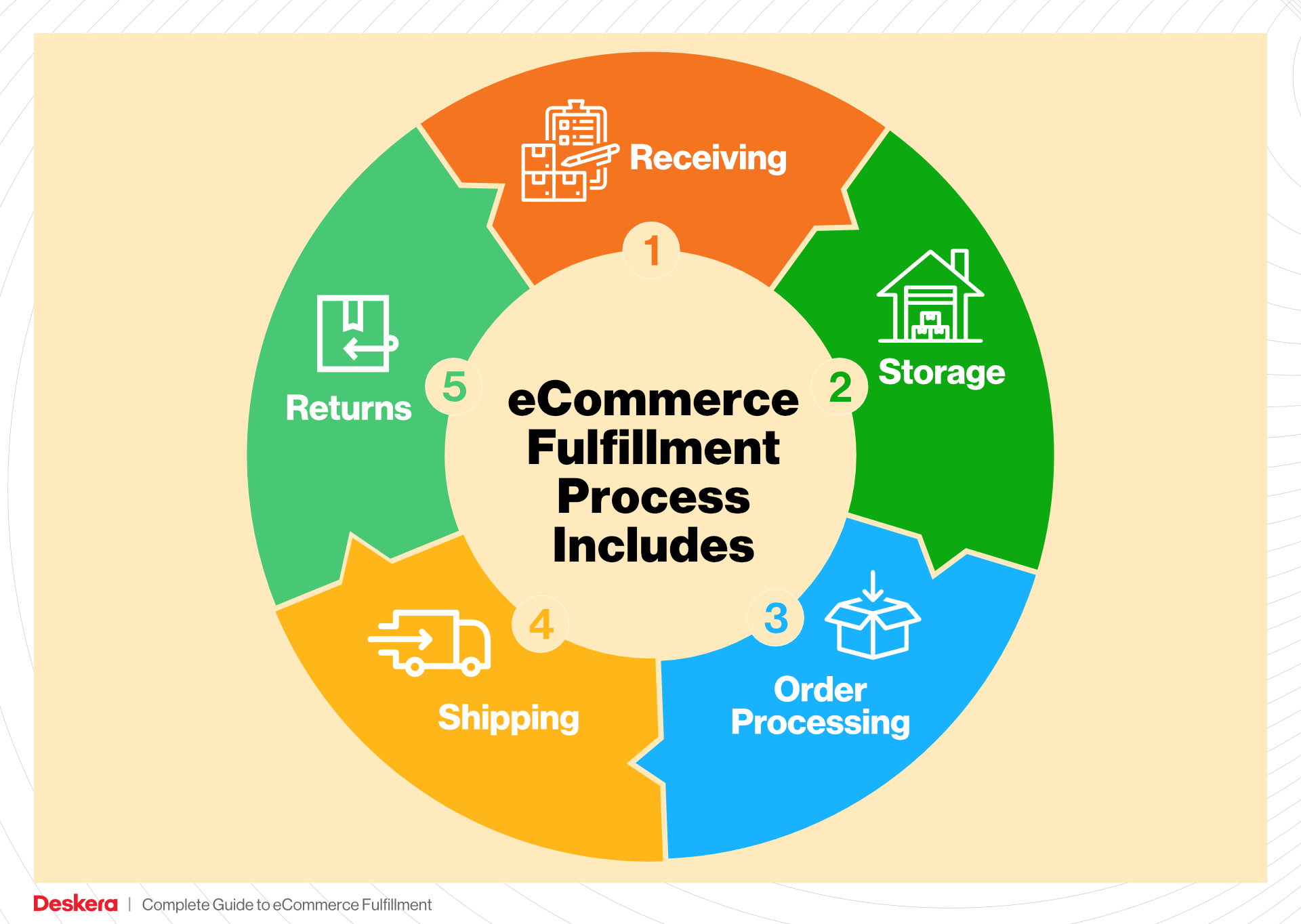
The goal of this guide is to empower you with the knowledge to make smart decisions about your logistics. By optimizing your fulfillment process, you can enhance customer satisfaction, reduce operational headaches, and drive your business towards sustainable growth. Let’s embark on this journey together and unlock the potential of efficient e-commerce fulfillment.
What You’ll Learn In This Guide
- What is E-commerce Fulfillment? An Introduction for Growing Businesses
- The Order Fulfillment Process: From ‘Buy’ Button to Customer’s Door
- Comparing Fulfillment Models: In-House vs. 3PL vs. Dropshipping
- A Deep Dive into Amazon FBA: Pros, Cons, and Who It’s For
- Core Services Offered by Fulfillment Centers
- How to Choose a Fulfillment Partner: A 6-Point Checklist
- Understanding Fulfillment Pricing: A Breakdown of Common Fees
- Frequently Asked Questions (FAQs) about Fulfillment
- Conclusion: Is Outsourcing Fulfillment the Right Move for Your Business?
- Important Disclaimer
The Order Fulfillment Process: From ‘Buy’ Button to Customer’s Door
1. Receiving Inventory
The order fulfillment process begins with receiving inventory, which involves the delivery of products from suppliers to the fulfillment center. During this stage, warehouse staff verify incoming shipments against purchase orders to ensure that the correct items and quantities have been received. This verification process includes checking for damages, discrepancies, and ensuring that all items meet quality standards.
Importance: This step is critical as it lays the foundation for accurate inventory management. If inventory is not accurately received and recorded, it can lead to stockouts or excess stock, which can disrupt the entire fulfillment process.
Key Term: SKU (Stock Keeping Unit) – This unique identifier is used to track individual items in the inventory system, making it easier to manage stock levels and fulfill orders accurately.
2. Warehouse Storage
Once inventory has been successfully received and verified, it is then moved to the warehouse storage area. Here, items are organized in a way that optimizes space and accessibility. This can involve using shelves, bins, or pallets, depending on the type of products stored.
Importance: Effective warehouse storage is essential for efficient order picking later in the process. A well-organized warehouse reduces the time required to locate items, which ultimately speeds up the entire fulfillment process. Additionally, proper storage helps in maintaining inventory integrity and reduces the risk of damage.
Key Term: FIFO (First In, First Out) – This inventory management method ensures that older stock is sold before newer stock, minimizing the risk of obsolescence and spoilage, particularly for perishable goods.
3. Order Picking
When a customer places an order, the next step is order picking, where warehouse staff retrieve the items from storage based on the order details. This process can be carried out using various methods, including single order picking, batch picking, or wave picking, depending on the volume and complexity of orders.
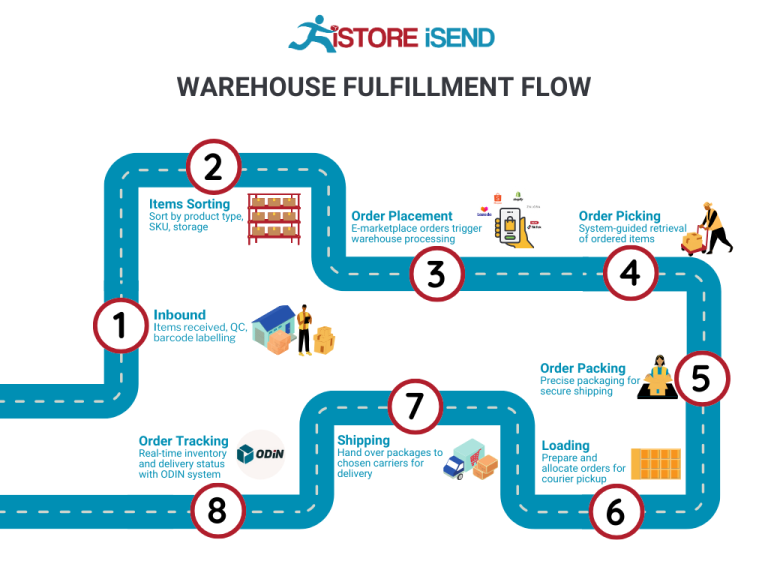
Importance: Order picking is a pivotal step as it directly impacts order accuracy and fulfillment speed. Efficient picking reduces the time from order placement to shipment, leading to higher customer satisfaction and repeat business.
Key Term: Pick Lists – These lists outline the items and quantities to be picked for each order, serving as a guide for warehouse staff to ensure all items are retrieved accurately and efficiently.
4. Order Packing
After items have been picked, they move on to the order packing stage. Here, products are securely packaged for shipment. This involves selecting the appropriate packaging materials, arranging items to prevent damage during transit, and including any necessary documentation, such as packing slips or return labels.
Importance: Proper packing is crucial for protecting products during shipping and ensuring that customers receive their orders in excellent condition. Moreover, well-packed items can reduce shipping costs by minimizing package weight and dimensions.
Key Term: Packing Slip – This document details the contents of the package and is included to inform the customer of what items are being shipped, enhancing transparency and customer trust.
5. Shipping & Delivery
The final step in the order fulfillment process is shipping and delivery. Once orders are packed, they are handed over to shipping carriers for delivery to customers. This stage includes selecting the best shipping method based on factors such as cost, speed, and destination.
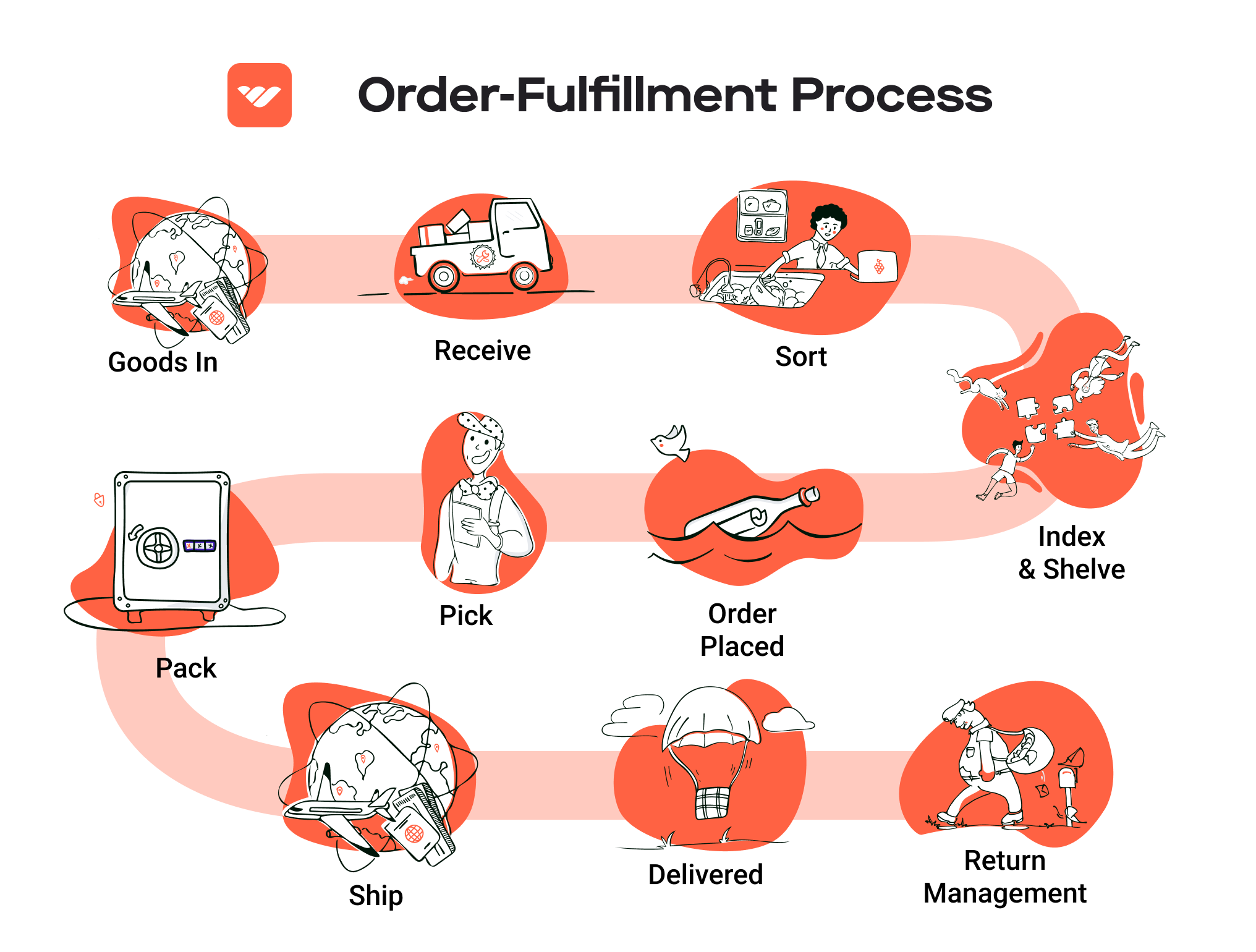
Importance: Timely shipping and delivery are essential for customer satisfaction. The speed at which an order is delivered can significantly influence customer perceptions of your business and their likelihood to make future purchases.
Key Term: Last Mile Delivery – This term refers to the final step of the shipping process, where the package is delivered from a transportation hub to the final destination (the customer’s door). Efficient last-mile delivery is vital for enhancing the overall customer experience.
By following these five essential steps in the order fulfillment process, e-commerce businesses can create a streamlined operation that not only meets customer expectations but also supports scalability and growth in a competitive market.
Comparing Fulfillment Models: In-House vs. 3PL vs. Dropshipping
Fulfillment Model Comparison
| Model | Who Handles Inventory | Best For (Business Stage) | Key Advantage | Key Disadvantage |
|---|---|---|---|---|
| In-House Fulfillment | Business (owner/employee) | Startups to Established Businesses | Full control over inventory and processes | High overhead costs and resource demand |
| Third-Party Logistics (3PL) | 3PL Provider | Growing to Scaling Businesses | Scalability and cost-effectiveness | Less control over inventory management |
| Dropshipping | Supplier | New Entrepreneurs or Test Markets | Low upfront investment | Lower profit margins and supplier dependency |
In-House Fulfillment
In-house fulfillment involves managing the entire inventory, warehousing, and shipping processes internally. This model is best suited for startups and established businesses that prefer complete control over their operations. By handling fulfillment in-house, businesses can directly manage inventory levels, order processing, and shipping, which can lead to improved efficiency and customer satisfaction. Companies can tailor their fulfillment processes to align with their specific needs and customer expectations. However, the major disadvantage of in-house fulfillment is the high overhead costs associated with staffing, warehousing, and logistics management. Additionally, as order volumes increase, the operational complexities can overwhelm small teams, leading to inefficiencies and potential errors in order fulfillment.
Third-Party Logistics (3PL)
Third-party logistics (3PL) providers offer businesses a way to outsource their logistics and fulfillment needs. This model is particularly beneficial for growing businesses that are scaling up their operations but may not have the resources to manage logistics in-house. With a 3PL, companies can leverage the provider’s expertise, technology, and infrastructure to handle inventory storage, order processing, and shipping. One of the key advantages of using a 3PL is scalability; businesses can easily adjust their logistics operations based on demand fluctuations without incurring the costs associated with expanding their own facilities. However, the trade-off is that businesses relinquish some control over their inventory management processes, which can lead to challenges in communication and alignment with the 3PL provider. Companies must also ensure they select a reputable 3PL partner to mitigate risks associated with fulfillment errors or delays.
Dropshipping
Dropshipping is a fulfillment model where retailers sell products without holding any inventory. Instead, when a customer places an order, the retailer forwards the order details to a supplier, who then ships the product directly to the customer. This model is particularly appealing for new entrepreneurs or those testing new markets, as it requires minimal upfront investment and eliminates the need for warehousing and logistics management. The primary advantage of dropshipping is its low risk; businesses can offer a wide range of products without the financial burden of purchasing inventory. However, dropshipping comes with its own set of challenges, notably lower profit margins due to reliance on suppliers and potential supply chain issues. Retailers are also dependent on their suppliers for product quality and shipping times, which can impact customer satisfaction and brand reputation.
In summary, each fulfillment model presents distinct advantages and disadvantages tailored to different business needs and stages. Choosing the right model requires careful consideration of your operational capabilities, growth plans, and the level of control you desire over your fulfillment processes.
A Deep Dive into Amazon FBA: Pros, Cons, and Who It’s For
What is Fulfillment by Amazon (FBA)?
Fulfillment by Amazon (FBA) is a service provided by Amazon that allows e-commerce sellers to store their products in Amazon’s fulfillment centers. Amazon takes care of storage, packaging, and shipping of the products directly to customers. By using FBA, sellers can leverage Amazon’s vast logistics network and customer service capabilities, making it an attractive option for scaling businesses.
When a customer places an order for an FBA product, Amazon picks the item from its inventory, packs it, and ships it on behalf of the seller. Additionally, Amazon handles customer inquiries and returns for those orders, allowing sellers to focus on other aspects of their business, such as product development and marketing.
How Does FBA Work?
-
Create an Amazon Seller Account: To get started with FBA, you need to have an Amazon seller account. This can be either an Individual or Professional account, depending on your sales volume and requirements.
-
Prepare Your Products: Sellers must prepare their products according to Amazon’s guidelines, which include packaging and labeling requirements. This ensures that products are ready for storage and shipment.
-
Ship Your Inventory: Once your products are prepared, you send them to Amazon’s fulfillment centers. Amazon provides shipping labels and guidance on how to send your inventory.
-
Product Listing: List your products on Amazon and select the FBA option. Your products will then become eligible for Amazon Prime and other benefits associated with FBA.
-
Storage and Fulfillment: Your products are stored in Amazon’s warehouses until an order is placed. When a customer orders your product, Amazon picks, packs, and ships it.
-
Customer Service and Returns: Amazon handles customer service inquiries and processes returns for FBA orders, providing a seamless experience for both sellers and customers.
Pros of Fulfillment by Amazon
-
Prime Eligibility: One of the most significant advantages of FBA is that products become eligible for Amazon Prime. This increases visibility and attracts a larger customer base, as Prime members are more likely to purchase items with free and fast shipping.
-
Increased Customer Trust: Products fulfilled by Amazon often enjoy higher trust levels among customers. The Amazon brand is synonymous with reliability and customer service, which can lead to increased sales and repeat customers.
-
Multi-Channel Fulfillment: FBA allows sellers to fulfill orders from multiple sales channels, not just Amazon. This means you can sell on your own website or other marketplaces while using Amazon’s logistics network to handle shipping.
-
Scalability: As your business grows, FBA can scale with you. You don’t have to worry about managing warehouse space or logistics; Amazon takes care of the heavy lifting, allowing you to focus on growing your business.
-
Time Savings: By outsourcing fulfillment to Amazon, sellers save time on logistics, packaging, and customer service. This enables them to concentrate on product development and marketing strategies.
Cons of Fulfillment by Amazon
-
High Fees: FBA comes with various fees, including storage fees, fulfillment fees, and potential long-term storage fees if your inventory doesn’t sell quickly. These costs can add up and impact your profit margins.
-
Strict Inventory Rules: Amazon has stringent rules regarding inventory management, including guidelines on product condition, labeling, and packaging. Non-compliance can lead to penalties or removal of your listings.
-
Commingling Risks: FBA allows for commingling of inventory, meaning that your products may be stored alongside similar items from other sellers. This can lead to issues with counterfeit goods or damaged items being sent to customers, which can harm your reputation.
-
Loss of Control: When you use FBA, you relinquish some control over the fulfillment process. This includes how your products are packaged and shipped, which may not align with your brand’s image or customer expectations.
-
Variable Shipping Times: While Amazon strives for fast shipping, there may be instances where fulfillment times are not consistent, especially during peak seasons. This can affect customer satisfaction and lead to negative reviews.
Who is FBA Best For?
Fulfillment by Amazon is particularly well-suited for:
-
Small to Medium-Sized Businesses: Sellers looking to grow without the burden of managing logistics can benefit significantly from FBA, allowing them to focus on sales and marketing.
-
E-commerce Startups: New entrepreneurs can leverage FBA to gain market visibility quickly, especially if they have limited experience in logistics.
-
Brands Seeking to Scale: Established brands looking to expand their reach can utilize FBA to tap into Amazon’s vast customer base and logistics infrastructure without investing heavily in their own fulfillment centers.
-
Sellers with Seasonal Products: If your business experiences fluctuating demand, FBA can help manage inventory during peak seasons without the need for long-term storage solutions.
-
Multi-Channel Sellers: For businesses that sell across various platforms, FBA’s multi-channel fulfillment options provide a convenient way to manage orders from different sales channels.
In conclusion, Fulfillment by Amazon offers numerous advantages for e-commerce sellers, but it is essential to weigh these against the potential drawbacks. By carefully considering your business model and growth objectives, you can determine whether FBA is the right fit for your operations.
Core Services Offered by Fulfillment Centers
Inventory Management & Warehousing
Inventory management and warehousing are foundational services provided by fulfillment centers, ensuring that e-commerce businesses can store their products efficiently while maintaining optimal stock levels. This service involves the systematic tracking of inventory, including the receipt, storage, and distribution of goods.
Benefits:
1. Real-time Visibility: Advanced inventory management systems offer real-time tracking, allowing businesses to monitor stock levels across multiple sales channels. This minimizes the risk of stockouts or overstocking, which can lead to lost sales or increased holding costs.
-
Efficient Space Utilization: Fulfillment centers are designed to maximize storage efficiency, enabling businesses to store products in a cost-effective manner. This is particularly beneficial for e-commerce businesses that experience seasonal fluctuations in demand.
-
Scalability: As your business grows, fulfillment centers can easily accommodate increased inventory levels without the need for significant capital investment in additional warehousing space. This flexibility allows businesses to scale operations seamlessly.
Pick and Pack Services
Pick and pack services involve the selection of products from the warehouse (picking) and preparing them for shipment (packing). This process is crucial in ensuring that orders are fulfilled accurately and efficiently.
Benefits:
1. Accuracy and Speed: Fulfillment centers utilize technology to streamline the picking process, reducing errors and ensuring that the right items are selected for each order. This leads to faster turnaround times, which is essential for maintaining high customer satisfaction.
-
Custom Packaging Options: Many fulfillment centers offer customizable packing solutions, allowing businesses to enhance their branding through personalized packaging. This not only improves the unboxing experience for customers but can also increase brand loyalty.
-
Order Management: By outsourcing pick and pack services, e-commerce businesses can focus on core activities such as marketing and product development while leaving the logistics to experts. This delegation of tasks can lead to increased efficiency and productivity.
Kitting and Assembly
Kitting and assembly services involve grouping individual items together to create a single product or preparing items for sale as a bundled offering. This service is particularly valuable for businesses that sell products that require assembly or those that wish to offer bundled promotions.
Benefits:
1. Streamlined Production: By outsourcing kitting and assembly, businesses can reduce the time and labor costs associated with preparing products for sale. This is particularly beneficial for seasonal promotions or product launches where quick turnaround is critical.
-
Enhanced Customer Experience: Bundled products can offer customers better value and convenience, which can lead to increased sales. Fulfillment centers can efficiently assemble these kits, ensuring that customers receive their orders quickly and accurately.
-
Inventory Control: Kitting allows businesses to manage their inventory more effectively by tracking bundled products as a single SKU. This simplifies inventory management and helps businesses understand sales trends for specific bundles.
Returns Management (Reverse Logistics)
Returns management, or reverse logistics, is the process of handling returned products from customers back to the fulfillment center. This service is vital for e-commerce businesses as it directly impacts customer satisfaction and brand reputation.
Benefits:
1. Streamlined Returns Process: Fulfillment centers typically have established protocols for processing returns, which can significantly reduce the time and effort required for businesses to handle returns internally. This efficiency can enhance the overall customer experience.
-
Inventory Replenishment: Efficient returns management allows businesses to quickly restock returned items back into inventory, minimizing losses and maximizing the potential for resale. This is crucial for maintaining healthy inventory levels.
-
Data Insights: Analyzing return data can provide valuable insights into customer preferences and product quality issues. Understanding the reasons behind returns can help businesses make informed decisions regarding product offerings and improvements.
In conclusion, partnering with a fulfillment center for core services like inventory management, pick and pack, kitting and assembly, and returns management can significantly enhance the operational efficiency of e-commerce businesses. By leveraging these services, entrepreneurs and operations managers can focus on scaling their sales and enhancing customer satisfaction while leaving logistics to the experts.
How to Choose a Fulfillment Partner: A 6-Point Checklist
Location & Warehouse Network
Importance:
The geographical location of your fulfillment partner’s warehouses significantly affects shipping times and costs. A partner with strategically located warehouses can ensure faster delivery to your customers, enhance customer satisfaction, and reduce shipping expenses.
Questions to Ask:
– Where are your warehouses located, and how do they align with my customer demographics?
– Do you have a network of warehouses that can facilitate regional shipping?
– What is your average shipping time to major cities from your warehouses?
– How do you handle international shipping, and what locations do you service?
Technology & Integrations
Importance:
In today’s e-commerce landscape, seamless technology integration is crucial for efficient operations. A fulfillment partner should provide robust Warehouse Management Systems (WMS) that allow for real-time inventory tracking, order management, and analytics.
Questions to Ask:
– What technology platforms do you use for inventory and order management?
– Can your system integrate with my e-commerce platform (e.g., Shopify, WooCommerce, Amazon)?
– Do you provide real-time inventory visibility across all sales channels?
– What reporting capabilities do you offer to help me analyze my fulfillment performance?
Specializations (e.g., cold storage, oversized items)
Importance:
Different businesses have unique fulfillment needs. Whether you’re dealing with perishables, oversized items, or specialized products, your fulfillment partner should have the necessary capabilities to handle your specific requirements effectively.
Questions to Ask:
– What types of products do you specialize in, and do you have experience with my product category?
– Do you offer specialized storage options, such as climate control or cold storage?
– How do you manage the handling and shipping of fragile or oversized items?
– Can you accommodate seasonal fluctuations in product volume?
Scalability & Capacity
Importance:
As your business grows, your fulfillment partner should be able to scale operations accordingly. This flexibility will help you manage increased order volumes without compromising service quality.
Questions to Ask:
– What is your current capacity, and how do you handle peak seasons?
– How do you ensure that your operations can scale with my business growth?
– What are your protocols for onboarding new clients or increasing service levels?
– Can you provide references from businesses of similar size that have scaled with your services?
Pricing and Contracts
Importance:
Understanding the pricing structure and contract terms of your fulfillment partner is essential to avoid unexpected costs and ensure profitability. Transparent pricing helps you budget effectively and manage your margins.
Questions to Ask:
– What is your pricing structure (e.g., per order, per item, storage fees)?
– Are there any hidden fees or additional costs I should be aware of?
– How do you handle contract termination or changes in service requirements?
– Can you provide a sample contract to review?
Customer Support & Reviews
Importance:
A responsive and knowledgeable customer support team is vital for addressing any issues that may arise during your partnership. Additionally, researching reviews and testimonials can provide insight into the partner’s reliability and service quality.
Questions to Ask:
– What customer support channels do you offer (e.g., phone, email, chat)?
– What are your average response times for support inquiries?
– Can you provide case studies or testimonials from current or past clients?
– How do you handle issues or discrepancies in order fulfillment?
Conclusion
Choosing the right fulfillment partner can significantly impact your e-commerce business’s success. By carefully evaluating potential partners against this checklist, you can make an informed decision that aligns with your operational needs and growth ambitions. The right partner will not only enhance your logistics but also provide a foundation for scaling your business effectively.
Understanding Fulfillment Pricing: A Breakdown of Common Fees
Initial Setup Fees
Initial setup fees are one-time charges that cover the costs associated with integrating your e-commerce platform with the fulfillment center’s systems. This can include the setup of inventory management software, API integrations, and customization of the fulfillment process to align with your specific business needs.
These fees can vary widely depending on the complexity of your requirements and the fulfillment center’s capabilities. Some providers may offer free setup if you commit to a certain volume of orders or a long-term contract. When evaluating potential fulfillment partners, always ask about their setup fees upfront and what services are included in that cost.
Receiving Fees
Receiving fees are charged each time inventory is delivered to the fulfillment center. This fee typically covers the labor and resources required to unload, inspect, and store incoming products. The calculation is often based on the number of pallets or boxes received, with additional charges for any special handling or inspections.
For example, if a fulfillment center charges $20 per pallet, and you send ten pallets, your receiving fee would total $200. Understanding this fee structure is essential, especially if your inventory fluctuates significantly in volume. It’s advisable to negotiate terms that align with your shipment frequency and sizes to minimize costs.
Storage Fees (per pallet/bin)
Storage fees are recurring charges based on the space your inventory occupies within the fulfillment center. These fees are typically calculated on a per-pallet or per-bin basis, with costs varying depending on the location of the warehouse and the type of goods stored.
For instance, a fulfillment center might charge $15 per pallet per month. If your business has 20 pallets in storage, your monthly storage fee would be $300. Some providers also implement tiered pricing, where the rate decreases as you store more inventory, which can be beneficial for scaling businesses. Be sure to ask about any additional charges for long-term storage or seasonal fluctuations in inventory levels.
Pick & Pack Fees (per item/order)
Pick and pack fees are charged for the process of selecting items from storage and preparing them for shipment. These fees can be structured in several ways: per item, per order, or a combination of both.
For example, if a fulfillment center charges $2 per item and your order consists of five items, your pick and pack fee would be $10. Some providers may also offer discounted rates for larger orders. Understanding the pick and pack fee structure is crucial, especially if your products vary significantly in size and weight, as this can impact the overall fulfillment costs.
Shipping Fees
Shipping fees are one of the most significant costs in the fulfillment process and are determined by factors such as package weight, dimensions, destination, and shipping speed. Fulfillment centers often have negotiated rates with various carriers, allowing them to pass on savings to their clients.
For example, shipping costs can range from $5 for lightweight packages shipped locally to $50 or more for heavy items sent internationally. It’s essential to understand how your fulfillment partner calculates shipping fees, as some may charge additional handling fees or surcharges for specific delivery options.
Tips for Getting an Accurate Quote
-
Provide Detailed Information: When requesting a quote, include comprehensive details about your inventory, order volume, and shipping requirements. This information helps fulfillment centers provide a more accurate estimate.
-
Ask About All Fees: Ensure you understand all the potential fees involved, including any hidden charges that may arise during peak seasons or with specific product types.
-
Negotiate Terms: Don’t hesitate to negotiate terms and pricing. Many fulfillment centers are willing to adjust their fees based on the volume of business you bring.
-
Request a Trial Period: If possible, request a trial period to evaluate the fulfillment service without committing to a long-term contract. This can help you assess the actual costs involved.
-
Compare Multiple Providers: Gather quotes from several fulfillment centers to compare pricing structures and services offered. This can help you find the best fit for your business needs.
By understanding these common fulfillment pricing models and following these tips, you can make informed decisions that will positively impact your e-commerce operations and overall profitability.
Frequently Asked Questions (FAQs) about Fulfillment
1. What is the difference between a warehouse and a fulfillment center?
A warehouse is primarily a storage space for goods, where products are stored until they are needed. In contrast, a fulfillment center is designed for order processing and shipping. Fulfillment centers often include additional services like inventory management, order picking, packing, and shipping directly to customers, making them essential for e-commerce businesses that need to efficiently manage order fulfillment.
2. What is a 3PL (Third-Party Logistics) provider?
A 3PL provider offers outsourced logistics services that encompass the entire supply chain management process. This includes warehousing, fulfillment, inventory management, transportation, and shipping. Partnering with a 3PL allows e-commerce businesses to scale operations without the need to invest heavily in their own logistics infrastructure, thus enabling them to focus on core business activities.
3. How much do fulfillment services cost?
Fulfillment service costs can vary widely based on several factors, including order volume, types of products, storage needs, and specific services required (like packaging and shipping options). Typically, costs are broken down into storage fees (per cubic foot or pallet), pick and pack fees (per order), and shipping costs. Businesses should obtain quotes from multiple fulfillment providers to find a solution that fits their budget and operational needs.
4. How do I choose the right fulfillment center for my business?
Selecting the right fulfillment center involves assessing several factors: the provider’s location (proximity to your customers), technology and integration capabilities, service offerings (like international shipping), and cost structure. Additionally, consider the provider’s track record for accuracy and speed of fulfillment, as well as their customer service quality.
5. Can I integrate my e-commerce platform with a fulfillment center?
Yes, most fulfillment centers offer integration capabilities with popular e-commerce platforms like Shopify, WooCommerce, and Amazon. This integration allows for real-time syncing of inventory and orders, streamlining the fulfillment process and ensuring that your stock levels are accurate across all sales channels.
6. What is the typical turnaround time for order fulfillment?
Turnaround times can vary based on the fulfillment center’s operational efficiency, the complexity of the order, and the shipping method chosen. Typically, fulfillment centers can process orders within 24 to 48 hours, with options for same-day shipping available at some facilities. It’s essential to confirm these timelines with your chosen provider.
7. How can I ensure my inventory is managed effectively in a fulfillment center?
Effective inventory management in a fulfillment center can be achieved by utilizing real-time inventory tracking systems, conducting regular stock audits, and implementing automated reorder points. Many fulfillment centers provide robust warehouse management software that enables businesses to monitor inventory levels, track product performance, and manage stock across multiple sales channels seamlessly.
8. What are the benefits of using an Amazon Fulfillment Center?
Using an Amazon Fulfillment Center provides several advantages, including access to Amazon’s vast customer base, leveraging Amazon Prime for faster shipping options, and the ability to streamline your logistics through Amazon’s established infrastructure. Additionally, it can enhance your product visibility and credibility by being associated with the Amazon brand.
9. What types of products are best suited for fulfillment centers?
Fulfillment centers are ideal for a wide range of products, especially those that have high turnover rates or are sold directly to consumers online. Common product categories include electronics, apparel, health and beauty items, and home goods. However, businesses should ensure that their products comply with the fulfillment center’s handling capabilities and restrictions.
10. What should I do if my order volume increases unexpectedly?
If your order volume spikes, it’s crucial to have a scalable fulfillment solution in place. Communicate with your fulfillment provider about your increased demand and ensure they can accommodate your needs. Many fulfillment centers can rapidly adjust their operations, including staffing and inventory levels, to handle sudden increases in order volume effectively.
Conclusion: Is Outsourcing Fulfillment the Right Move for Your Business?
Evaluating the Benefits of Outsourcing Fulfillment
Outsourcing fulfillment can be a transformative strategy for e-commerce businesses looking to scale effectively. By partnering with a fulfillment service, you can save valuable time that can be redirected towards core business activities, such as product development and marketing. Fulfillment providers handle the logistics of warehousing, inventory management, and shipping, allowing you to focus on enhancing customer experiences and driving sales.
Scalability is another significant advantage of outsourcing. As your business grows, so too do your operational demands. A reliable fulfillment partner can adapt to your changing needs, whether you’re experiencing seasonal spikes in demand or expanding into new markets. This flexibility not only minimizes the risk of fulfillment delays but also ensures that your customers receive their orders promptly, reinforcing brand loyalty.
Moreover, fulfillment centers bring expertise and technology that may not be feasible to develop in-house. They often utilize advanced warehouse management systems that provide real-time inventory tracking and analytics, giving you insights into your operations and enabling data-driven decisions. These efficiencies can lead to substantial cost savings, as many fulfillment services negotiate better shipping rates with carriers, ultimately lowering your overall shipping expenses.
Choosing the Right Partner for Growth
As you contemplate outsourcing, the importance of selecting the right fulfillment partner cannot be overstated. Look for providers that align with your business goals, offer robust technology solutions, and have a proven track record of delivering exceptional service.
Take Action
To determine if outsourcing fulfillment is the right next step for your business, conduct a thorough audit of your current shipping processes. Assess your operational bottlenecks, shipping costs, and customer satisfaction levels. This analysis will help you identify whether a fulfillment partner could enhance your efficiency and support your growth ambitions. Don’t hesitate—explore the potential of outsourcing today and set your business on a path to greater success.
Important Disclaimer
⚠️ Important Disclaimer
The information in this guide is for educational purposes. Fulfillment services, pricing, and platform features change frequently. Always conduct your own due diligence and consult with providers directly before making business decisions.
